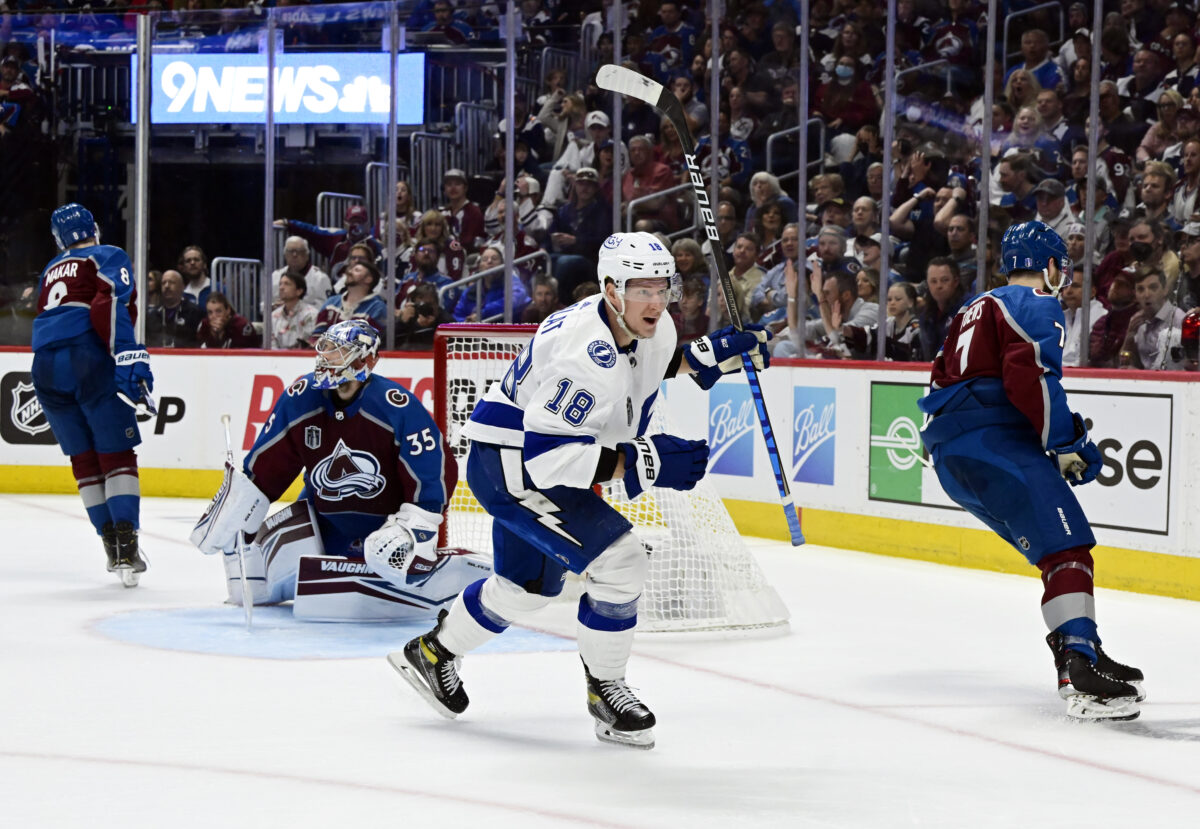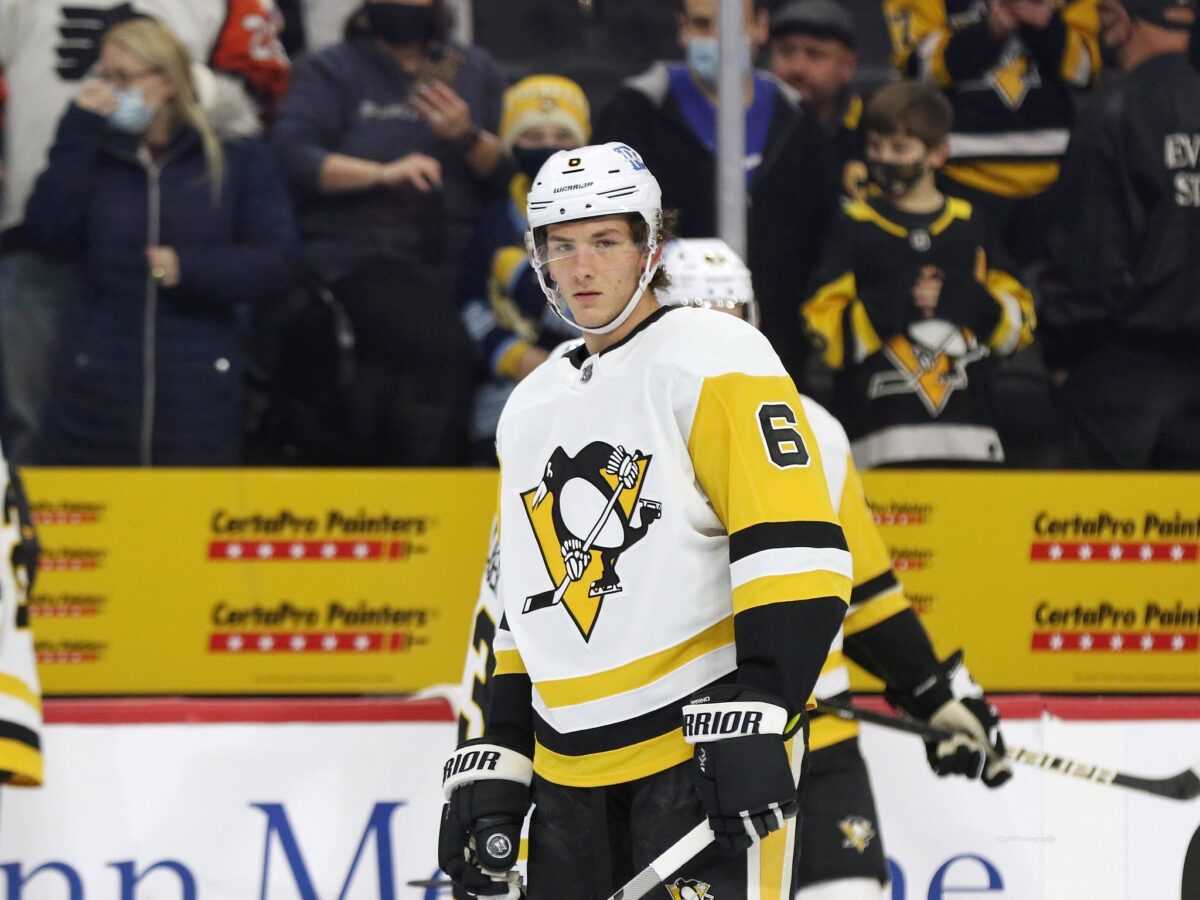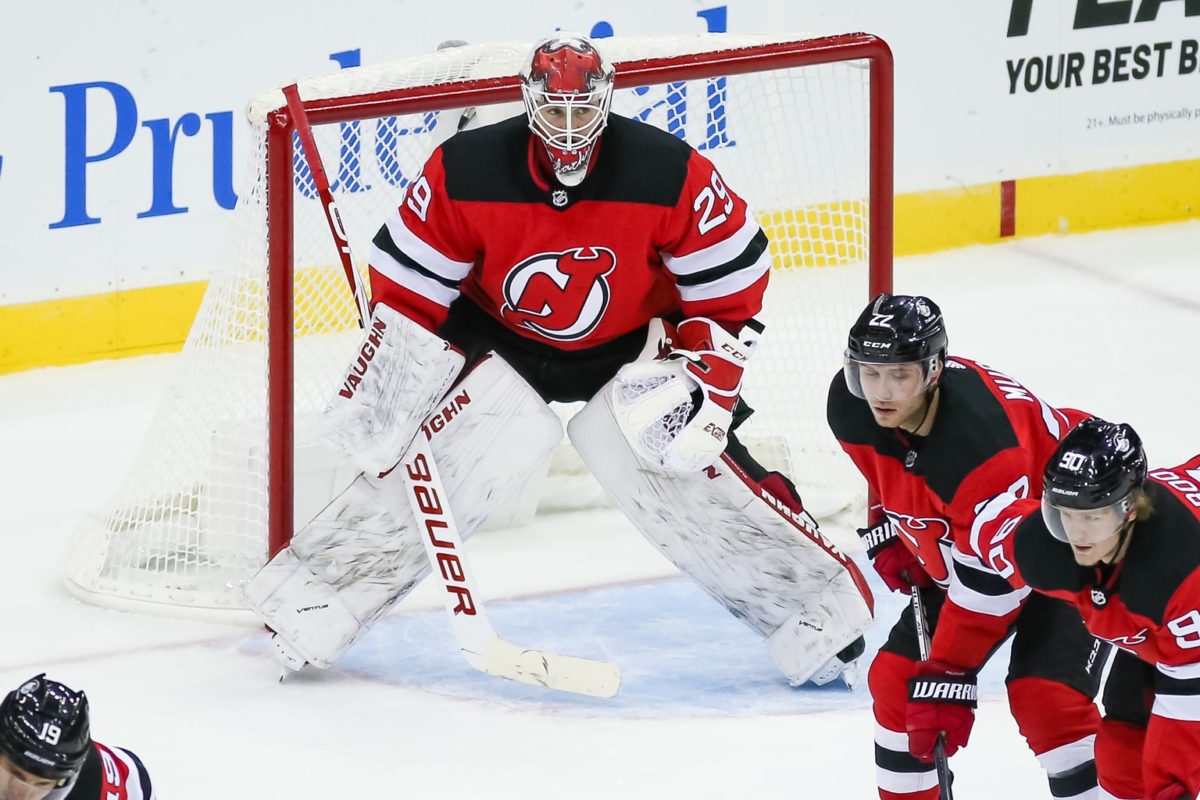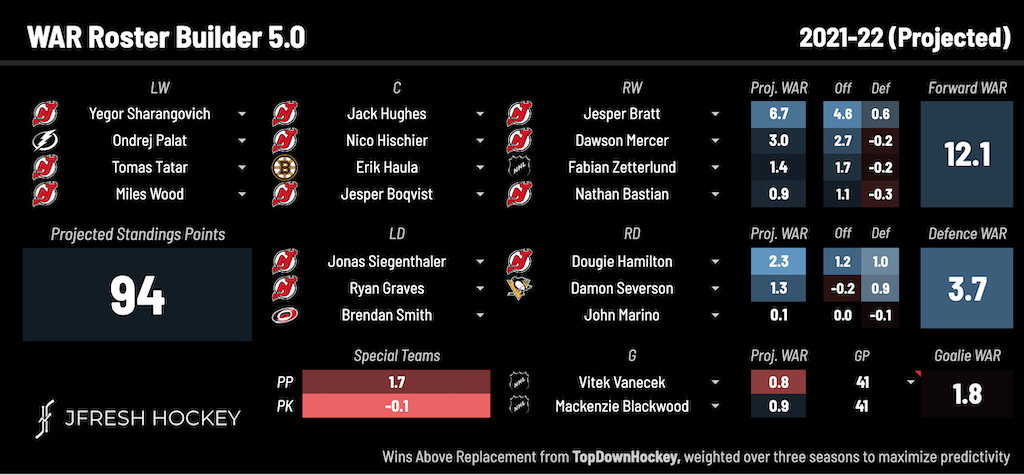The Metropolitan Division has been one of the most, if not the most, competitive in the NHL over the last few years. It should be no different next season, but it’s probably fair to say the division got a bit weaker this summer. For a New Jersey Devils team that had a solid offseason, though, without the big splash, it means now should be the time to compete.
In a two-part miniseries, we’ll be looking at the Devils’ roster using JFresh’s WAR Roster builder, followed by an overview of the Metropolitan Division later in the week and how the Devils compare to other teams after their moves this summer.
For this post, we’ll begin by going over each position group, the additions the Devils made this summer, and the key players they’ll return from last year’s group. We’ll conclude things with a visual of the roster builder and how the Devils project as a team for next season. Let’s get to it.
Devils’ Scoring Depth Improved
After signing Dougie Hamilton last summer, Devils general manager Tom Fitzgerald tried to make another big splash by pursuing Johnny Gaudreau in free agency this year. They lost out on the sweepstakes as Gaudreau agreed to a seven-year deal with the Columbus Blue Jackets that’ll pay him $9.875 million annually.
But even though Gaudreau chose to go elsewhere, the Devils signed Ondrej Palát to a five-year deal at a cap hit of $6 million. He’s coming off three straight Stanley Cup appearances with the Tampa Bay Lightning and will bring a veteran presence to a young locker room that’s sorely needed some veterans over the last couple of seasons.
Palát’s veteran presence isn’t the only thing he’ll add to the Devils, either. He’s averaged 20 goals and 55 points per 82 games over the last three seasons and 1.89 points per 60 minutes at 5-on-5. He’ll provide a scoring upgrade to the team’s top-six and will play in multiple situations, including late in games when defending a lead.
In addition to Palát, the Devils also acquired Erik Haula in the trade that sent Pavel Zacha to the Boston Bruins. Haula has averaged 18 goals and 41 points per 82 games over the last three seasons, along with 1.81 points per hour at 5-on-5. He’s a more efficient even-strength scorer than Zacha and converts on more of the high-danger chances he receives. He should provide some stability as the third-line center, though he can play on the wing too.

Palát and Haula will join a forward group that returns Jesper Bratt, Nico Hischier and Jack Hughes — three players who produced at 70-plus-point paces last season. Complementary wingers such as Dawson Mercer and Yegor Sharangovich are capable of 20-plus goals and 50-plus points, making for a top-six that should have some scoring punch.
And it’s not like the Devils couldn’t score a season ago. They finished 11th in the league in 5-on-5 scoring, with 181 goals. They averaged 2.99 goals per game at all strengths with a power play that was one of the worst in the league. With Andrew Brunette joining the staff as an assistant overseeing the power play, that should improve. Add Palát and Haula, plus a healthy Miles Wood and contributions from Fabian Zetterlund or Alexander Holtz, and scoring shouldn’t be a problem.
Devils Defense Should Be a Strength
What a difference a year and change make. At the conclusion of the 2020-21 season, the Devils finished with a top defense pair of Ty Smith and Damon Severson. Entering the 2022-23 campaign, they’ll likely have a first pair of Jonas Siegenthaler and Hamilton and plenty more depth to spare after the offseason.
While it wasn’t a top priority this summer, Fitzgerald and the Devils made some notable additions to the blue line. It started in free agency when they signed Brendan Smith to a two-year deal at a cap hit of $1.1 million. He may not offer much offensively, but he can move the puck and is excellent at defending the rush, giving the Devils a different look on the blue line that they’ve lacked.
Related: Devils GM Displaying His Values Through Defensive Upgrades
With what the Devils return defensively, signing Smith and calling it a day would’ve been more than acceptable. But shortly after free agency began on July 13, they acquired John Marino in a trade with the Pittsburgh Penguins in exchange for Ty Smith and a 2023 third-round pick.
Marino’s offensive production has slipped since his rookie season in 2019-20, but he still has plenty to offer. He can move the puck efficiently out of the defensive zone to start the rush, and he’s also excellent at defending the rush. That was one of the Devils’ biggest defensive weaknesses a season ago, so adding Marino and Brendan Smith should help improve their rush defense.

Returning from the 2021-22 Devils are Siegenthaler, Hamilton, Ryan Graves and Severson. Add in Smith and Marino, and the Devils’ blue line is the deepest it’s been in nearly a decade. The right side should be particularly strong since Severson and Marino will likely alternate between second- and third-pair minutes. When a team has that kind of depth on the blue line, they should see defensive improvement.
But that depth also trickles to the AHL level with the Utica Comets. Kevin Bahl and Nikita Okhotiuk fared well in limited NHL action a season ago and could be ready for meaningful minutes when called upon. The same applies to Reilly Walsh, and Šimon Nemec, the second overall pick in the 2022 draft, will probably see action at some point. Injuries are an unavoidable part of the NHL season, but the Devils should be able to absorb man games lost on the blue line better than they have in previous years because of their AHL depth.
Is a Blackwood & Vanecek Tandem the Answer?
Goaltending, goaltending, goaltending. That’s been the Devils’ fatal flaw in at least the last two seasons, but more so in 2021-22, when they were expected to be competitive in the Metropolitan Division. Injuries played a significant role in the team having an .881 save percentage (SV%) a season ago. Mackenzie Blackwood had heel surgery last summer but was never healthy at any point during the season. Meanwhile, Jonathan Bernier had season-ending hip surgery in December that caused him to miss the rest of the year.
Bernier is still working his way back from hip surgery and isn’t likely to be ready for the start of the 2022-23 season. But by all accounts, Blackwood is healthy and training as he usually would, per Fitzgerald. What the Devils get out of him will likely determine how far they can go in the Metropolitan Division. The league-average SV% a season ago was .902, so they don’t need to ask for much from him. If he finishes with a .905 SV% or above, that will go a long way to being competitive.
The question is, is Blackwood still capable of providing that kind of goaltending? Over the last two years, he’s totaled an .898 SV% and has given up an average of 13.6 goals above expected per season. That won’t get it done, but there are caveats. He got off to a hot start in 2020-21, but his season, much like the team’s, fell off a cliff after a team-wide COVID outbreak; he had a particularly rough bout with COVID himself.

Like the previous season, Blackwood got off a strong start but saw his numbers decline significantly as the heel injury worsened before the team decided to shut him down in January. In his exit interview, he said it felt like a knife went through his ankle every time he tried to push side to side. I’m not a doctor, but that seems problematic. If he’s 100 percent and the heel is no longer bothering him, he should rebound from the last two seasons. And it appears the Devils are gambling that he will.
Though the Devils are banking on a healthy Blackwood for 2022-23, they didn’t stand pat at the position this offseason. Ahead of the start of Day 2 of the NHL Draft, they acquired Vitek Vanecek and the 46th overall pick from the Washington Capitals in exchange second- and third-round picks in the 2022 draft.
Related: New Jersey Devils Gamble on Vitek Vanecek to Spark Goaltending
Vanecek has played in 79 NHL games in two years and has a .908 SV%, which is above the league average of .903 over that span. His 2021-22 season was quite good, however. His 5-on-5 SV% ranked ninth in the league for goalies with 1000-plus minutes logged at that game state, while his high-danger SV% ranked 10th. His penalty kill and 3-on-3 numbers have brought down his overall SV% in his two NHL seasons. But those are such small samples that they could be just noise, especially at 3-on-3.
If Vanecek’s 5-on-5 numbers were legit this past season, it’s very much possible to finish with an SV% above .910 for the season if he sees any improvement on the penalty kill and 3-on-3. That’d be a significant lift for the Devils, especially if Blackwood provides average or better goaltending.
2022-23 Devils Roster Builder Projection
We’ve gone through all the Devils’ additions and the key pieces they’ll return for 2022-23. Now let’s fill out the rest of the roster and see if it’s good enough to be competitive. Before examining the visual below, it’s important to remember that a WAR roster builder is not an exact science. Players can under or overperform projections, and injuries happen. Instead, think of it as a baseline to see if the Devils have a good enough roster to do some damage in the Metropolitan Division:

While the cutoff to make last season’s playoffs was 100 points, that seems unlikely to happen again. Bottom-feeders such as the Detroit Red Wings, Ottawa Senators and Devils improved this offseason. The Buffalo Sabres and Montreal Canadiens should be more competitive, even though they’re unlikely to contend for the playoffs. The cutoff in most seasons is usually in the mid-90s, so projecting for 94 points is a good place to be if you’re the Devils. (If Andreas Johnsson remains with the team, it ticks up to 95 points).
Teams that previously qualified for the postseason mostly got worse too. The Florida Panthers may have acquired Matthew Tkachuk, but they had to give up Jonathan Huberdeau and Mackenzie Weegar. They also lost Mason Marchment and Claude Giroux in free agency, so a step back seems likely. The same arguments apply to other top Eastern Conference teams such as the New York Rangers, Carolina Hurricanes, Toronto Maple Leafs and even the Lightning, who lost Palát, Ryan McDonagh and Jan Rutta this offseason.
These teams are still rock-solid bets to make the playoffs, but the gaudy point totals of 105-plus points are also a good bet to come down. The bottom-feeders have improved enough to chip off some points from last year’s playoff teams, which should make things more competitive. So for the Devils, that should be a good thing.
Though they weren’t offseason champs in 2022, the Devils did get better this summer. Are they a playoff team? I wouldn’t make that bet at the moment, but they’ve made worthwhile improvements to each position group, and their young core should take further steps forward. That should be good enough to make things interesting for a wildcard spot in the Metro.
Part 2 later this week: A look at the Devils and where they stack up compared to the rest of the Metropolitan Division
* * *
Advanced stats from Natural Stat Trick, Evolving-Hockey
